In 2018, Steve Begg told us about the visual effects work done for The Commuter. He then worked on Hellboy and The A List.
How did you get involved on this series?
The producer Peter Heslop knew me as we’d worked together in the past, and felt the climatic action sequence needed someone to work out how it was going to be done, i.e. practical vs CG or hand in hand, which I’d had loads of experience in.
How was the collaboration with the Director Jim Field Smith?
Jim is very technically savy but is – was very wary of CG up to a point and wanted to get as much as possible in-camera initially with the real jets and stuff and augment after with post FX work if we have to, something I’m in favor of also.
What was his approach to the visual effects?
He hates, as I do, the giveaway camera positions and moves that signpost the unreality of a lot of CG shots, no matter how beautifully they are lit and rendered. For example, shots like flying up to a jet and passing through the window into the cockpit, or the opposite of that, but mainly the shots were jets at 500+ mph scrape impossibly close to the lens, which you see in countless VFX shots today.. We tried as much as possible to make the shots look feasible in the real world. We never have shots just outside the aircraft looking in, for example. The sequences with the Eurofighter jets never have the cameras outside their canopies when we see the fighter pilots. All are shot with locked off cameras on wide lenses within their cockpit space. All other shots of those fighter jets are on long lenses for POV’s or wide in non-subjective shots..
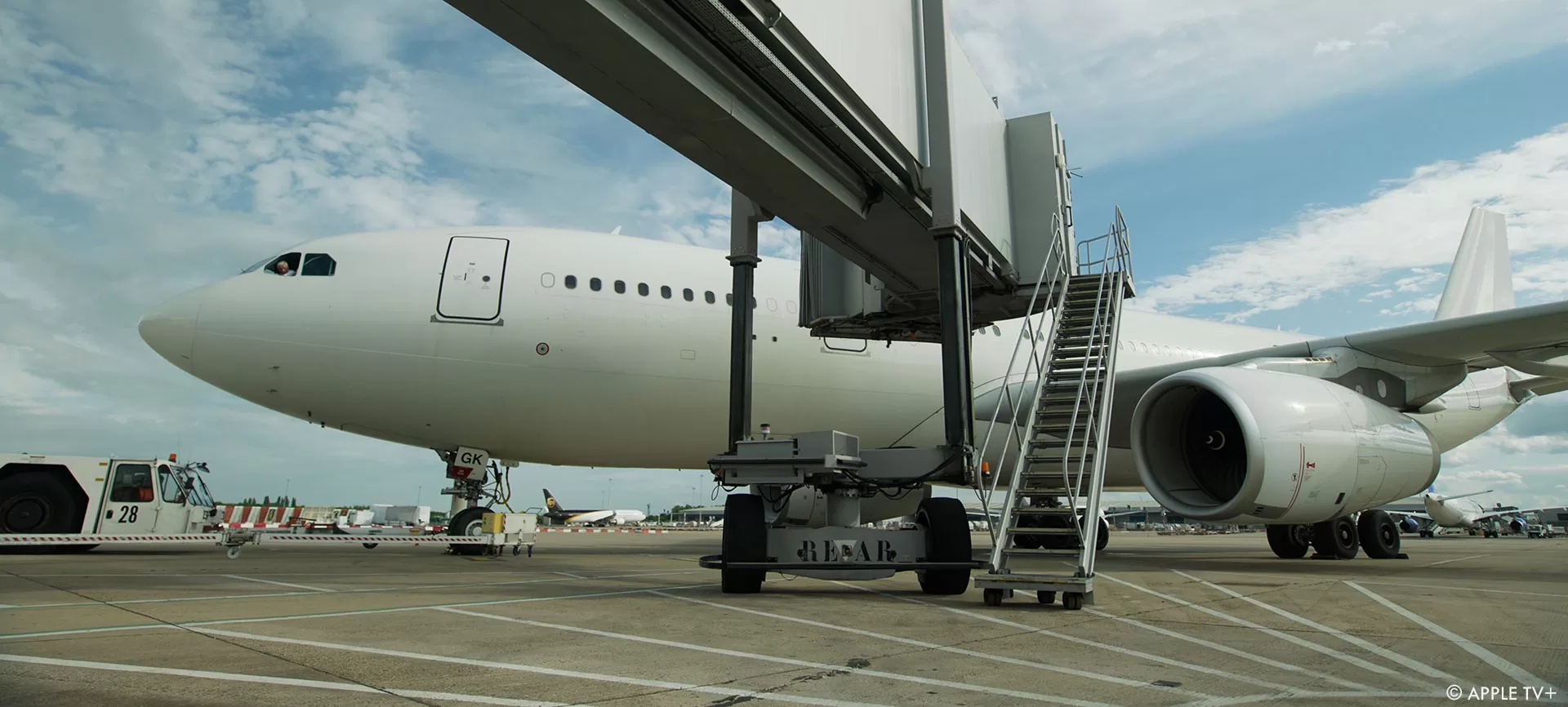
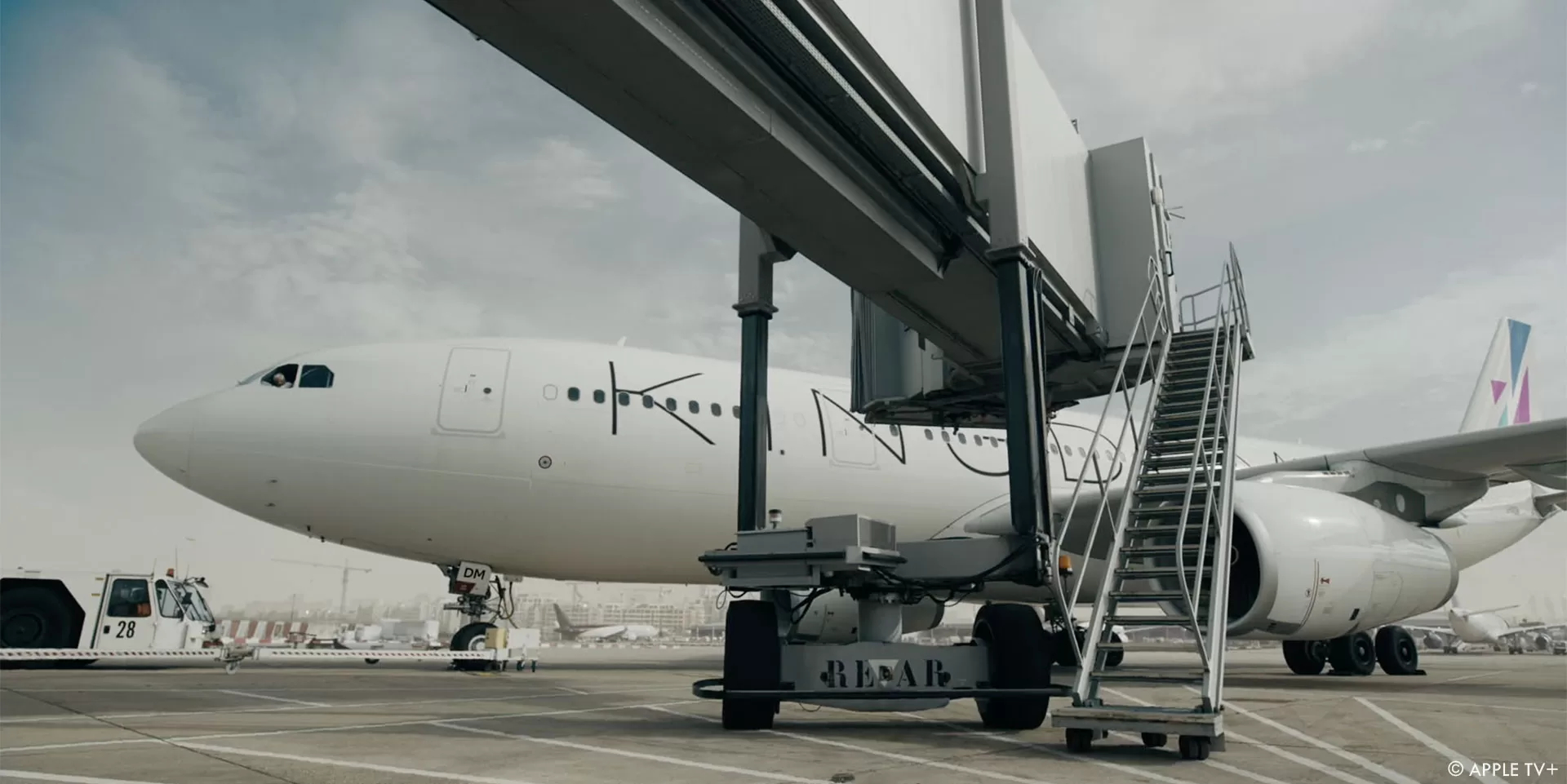
How did you organize the work with your VFX Producer?
I worked out a basic creative / technical approach to our shoot and post work which was meshed with using LUX Machina’s LED volume screens and panels for most views out of aircraft windows, and a couple of major set-pieces. Anna James coordinated the budgeting and scheduling of the whole lot through pre production, shoot and post, basically pulling everything together.
How did you choose the various vendors?
Initial previs on the two main VFX sequences were done by NVIZ. As this was not an overt VFX project, the main creative work which was the jet shots and crash and a handful of matte shots were assigned to one major vendor, Cinesite UK, were I was fortunate to work again with Zave Jackson (one of their in-house supervisors) who I’d collaborated and liked working with on a few previous projects. We also had a in-house Nuke guy (Pietro Abatti, who was also our data wrangler) who was there to pick up the fix-it shots which we knew would come as we shot. The fix-it shots blossomed exponentially as they always do however, beyond our in-house capacity, and these shots were passed onto Ghost VFX, Unit who did some very impressive work, I must say.
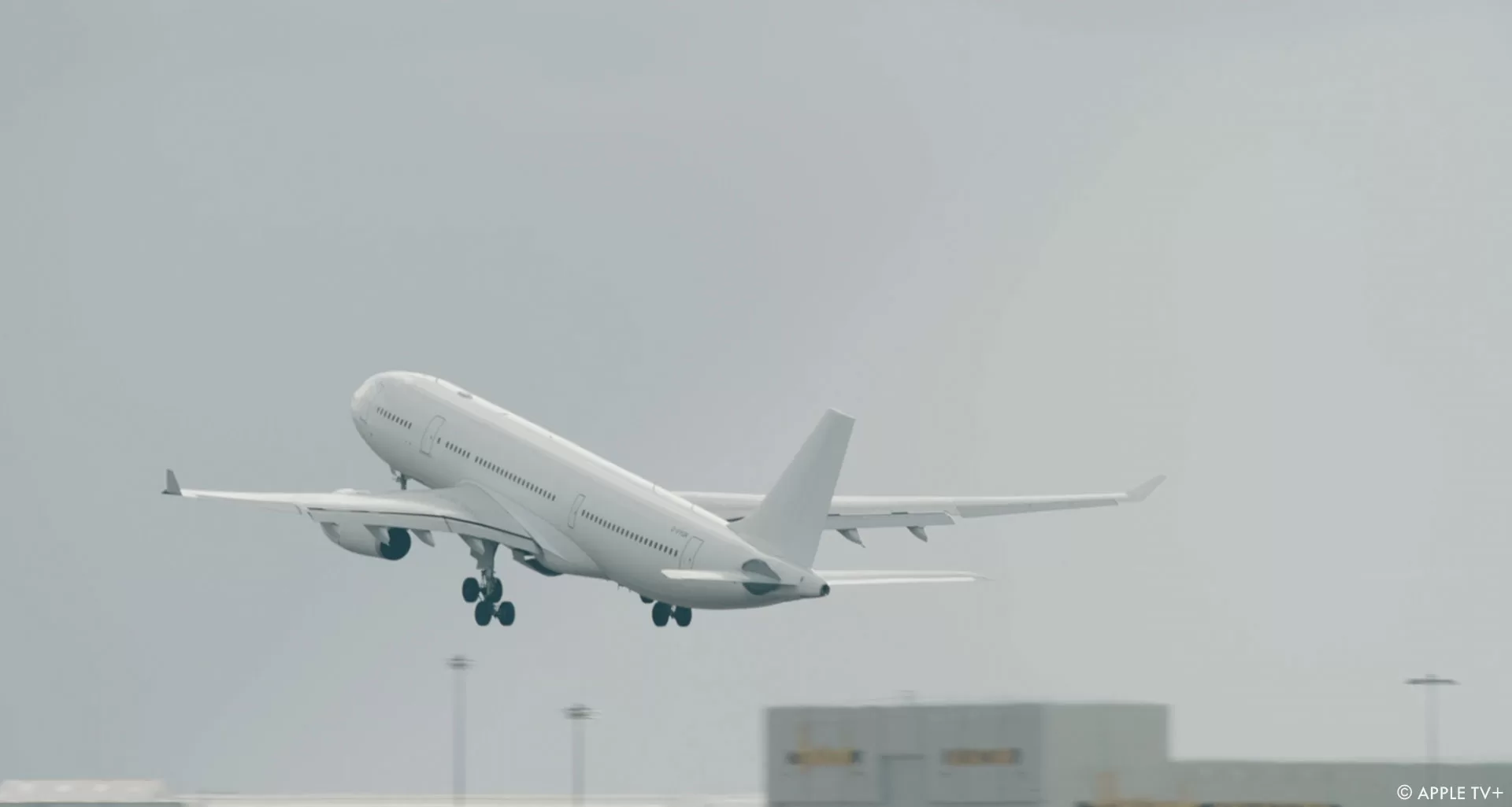
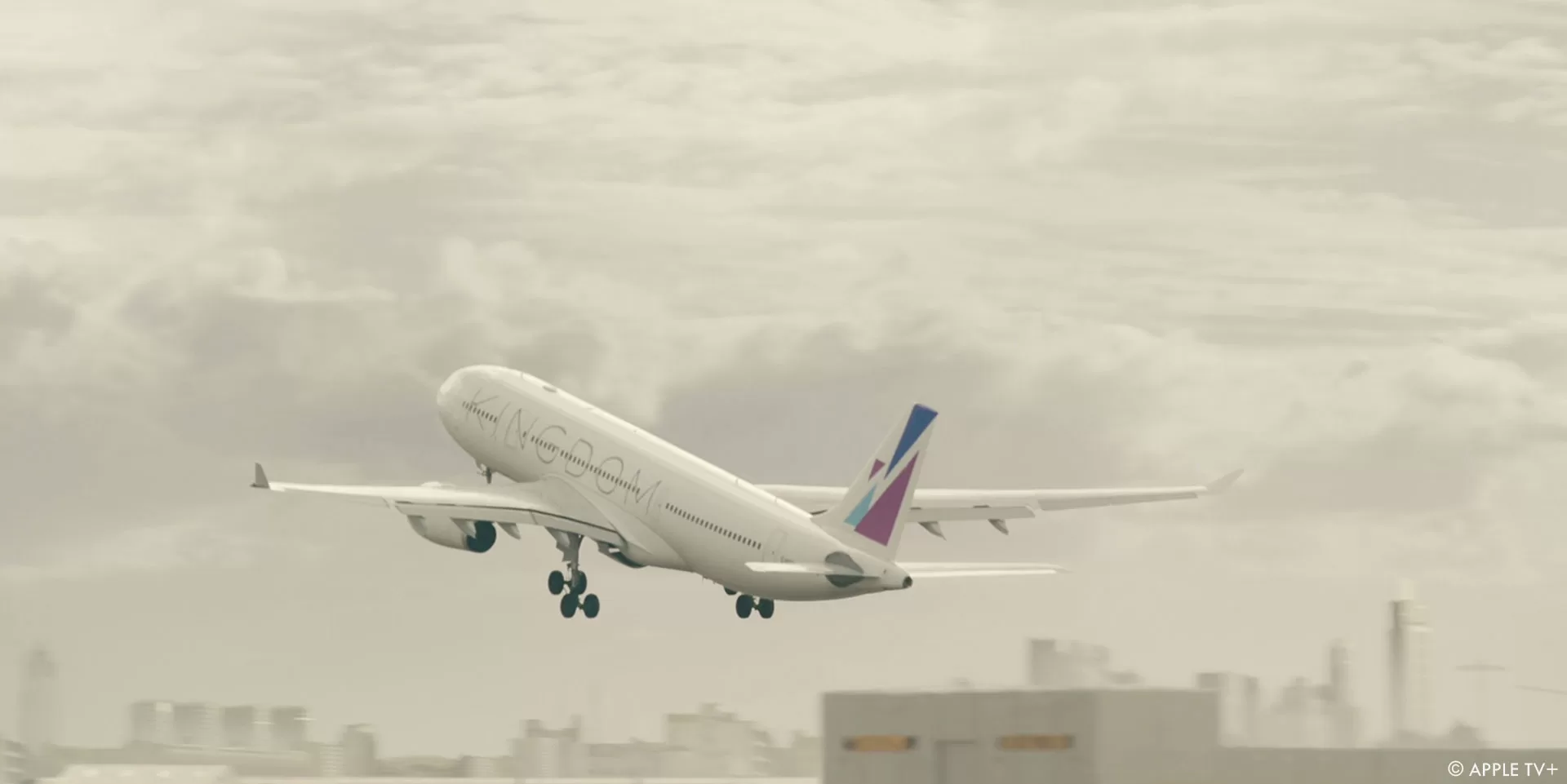
Can you elaborates about the various planes creation?
The hero Kingdom A330 airbus was primarily a real white aircraft with no markings, which was skinned afterwards by Cinesite with the ‘KINGDOM’ graphic and tail logo after being lidar scanned during the shoot at Gatwick airport, which also stood in for a Dubai airport via DMP’s.
A second decommissioned A330 was used for the post crash setpiece minus its nose wheel, this time painted white with the graphic and logo on one side, the shoot side, shot at the Cotswalds airport standing in for Northolt airport.
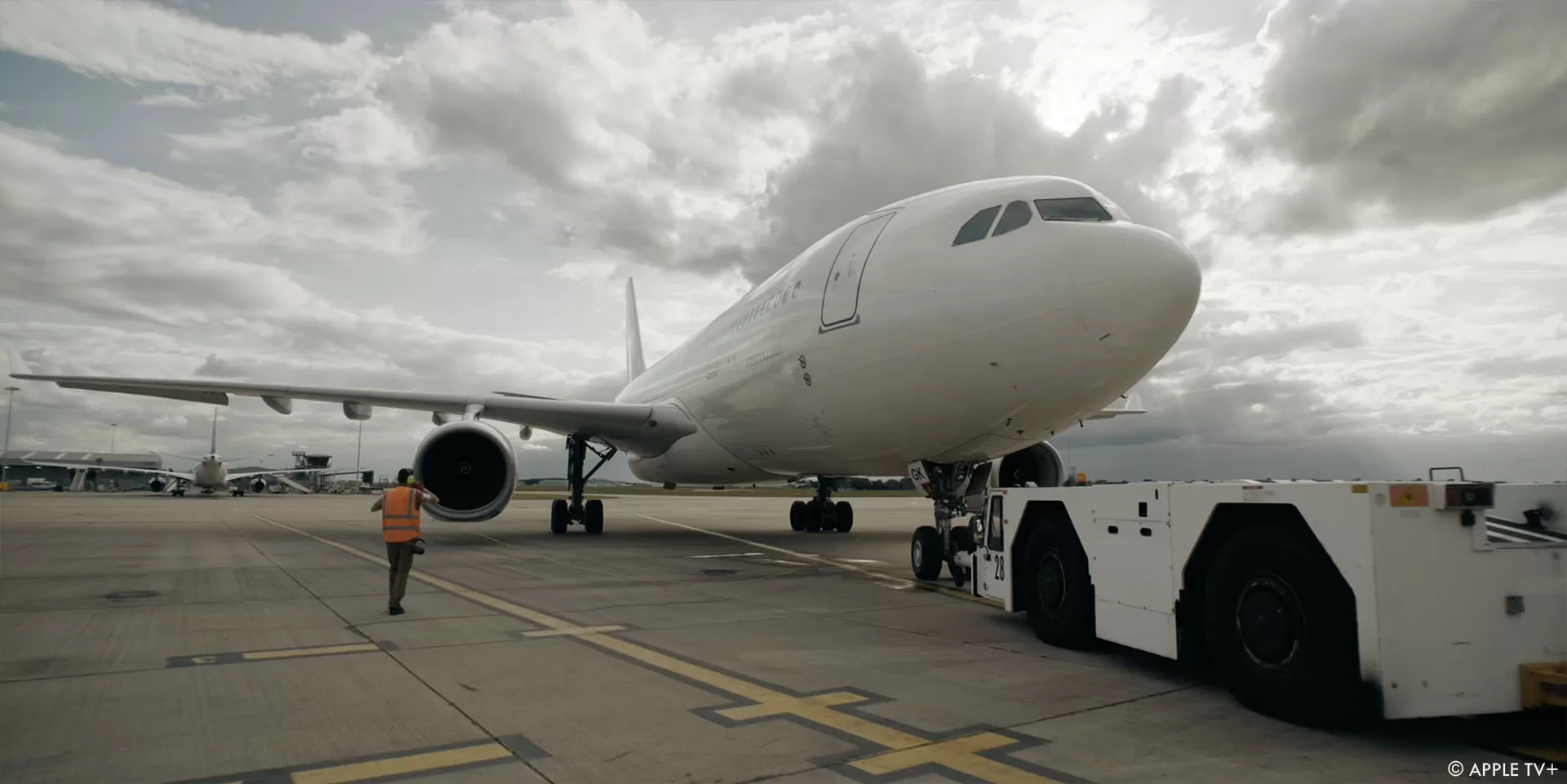
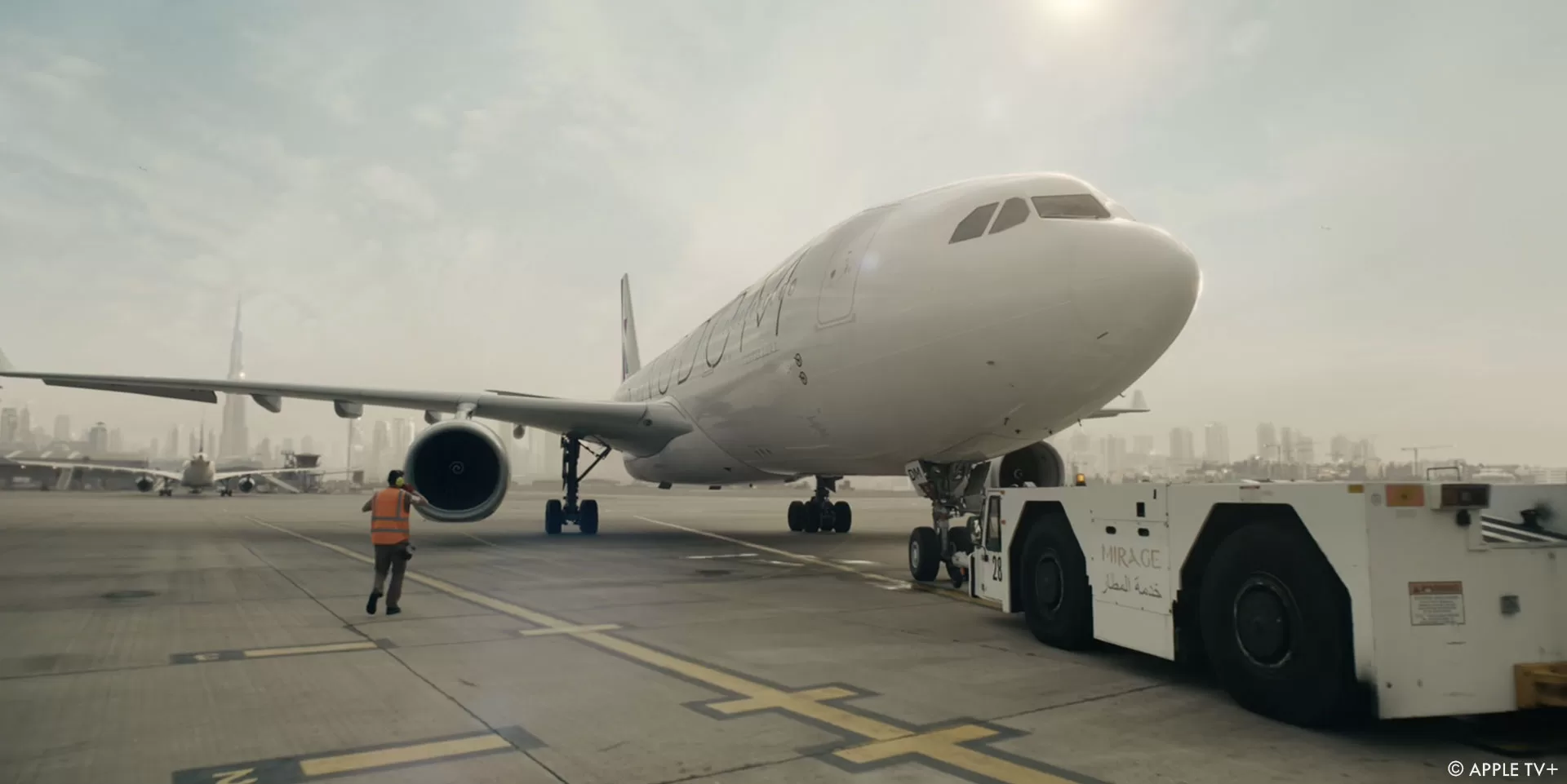
Thanks to a certain situation in Ukraine, the access to real Eurofighters / Typhoons vanished as they were all put on alert, unsurprisingly. So all shots of those aircraft are added in by Cinesite, including views out the windows. The good thing is the white A330 is real in all shots so lighting ref comes free. Thanks to having an accurate scan of that jet all the scales and positioning of the CG fighters relative to it are real, and not just posed.. Nice little subtle animation gags were also used when appropriate such as airbrakes and head movement on the pilots.
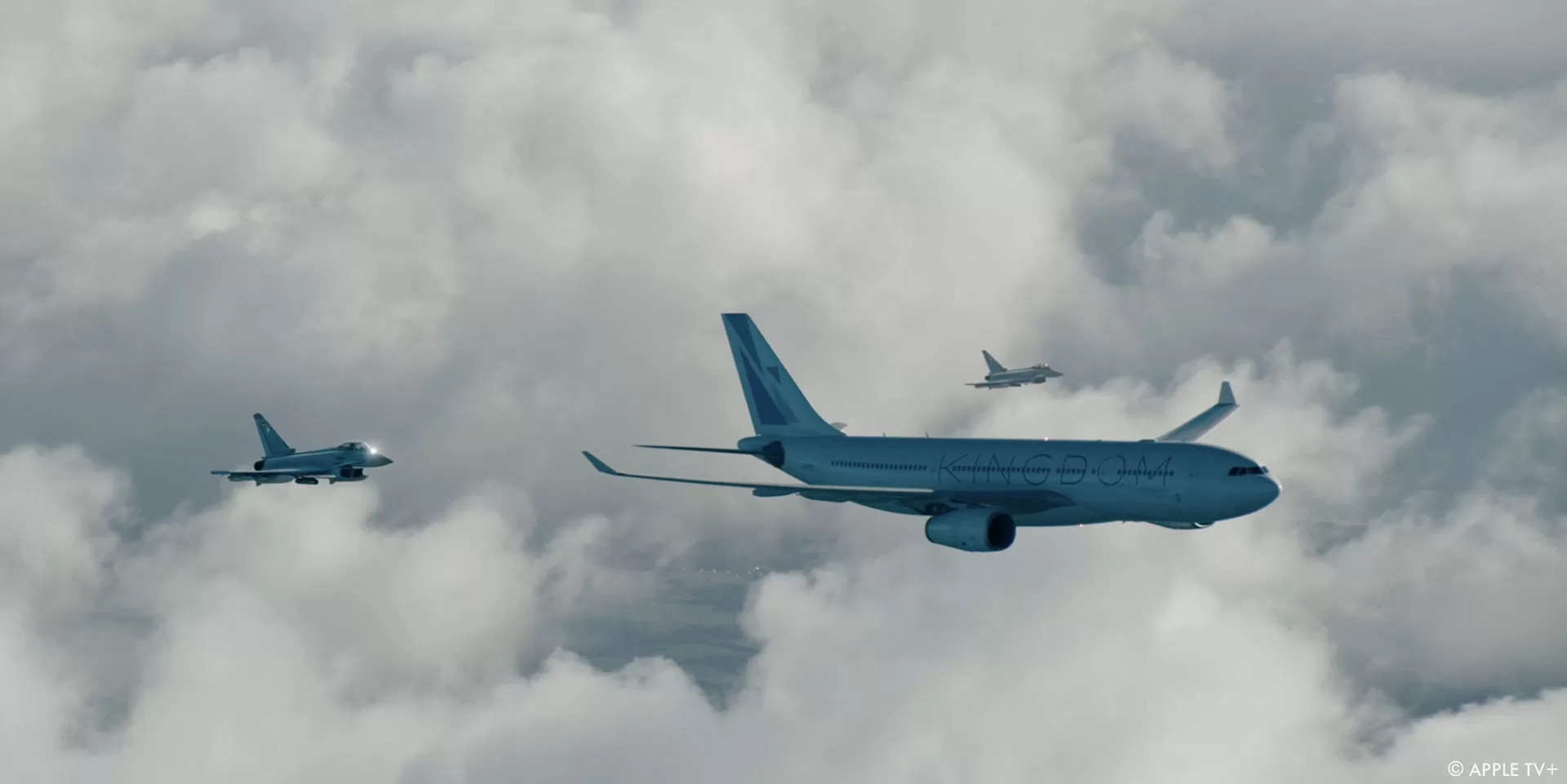
The plane is seen in various light conditions. How did you manage this aspect?
The more awkward shots were the ones where the jet passes in front of the sun and where it drops into clouds. Percentaging the density of the added graphics in perfect unison with the plane being flared out or disappearing became very tricky.
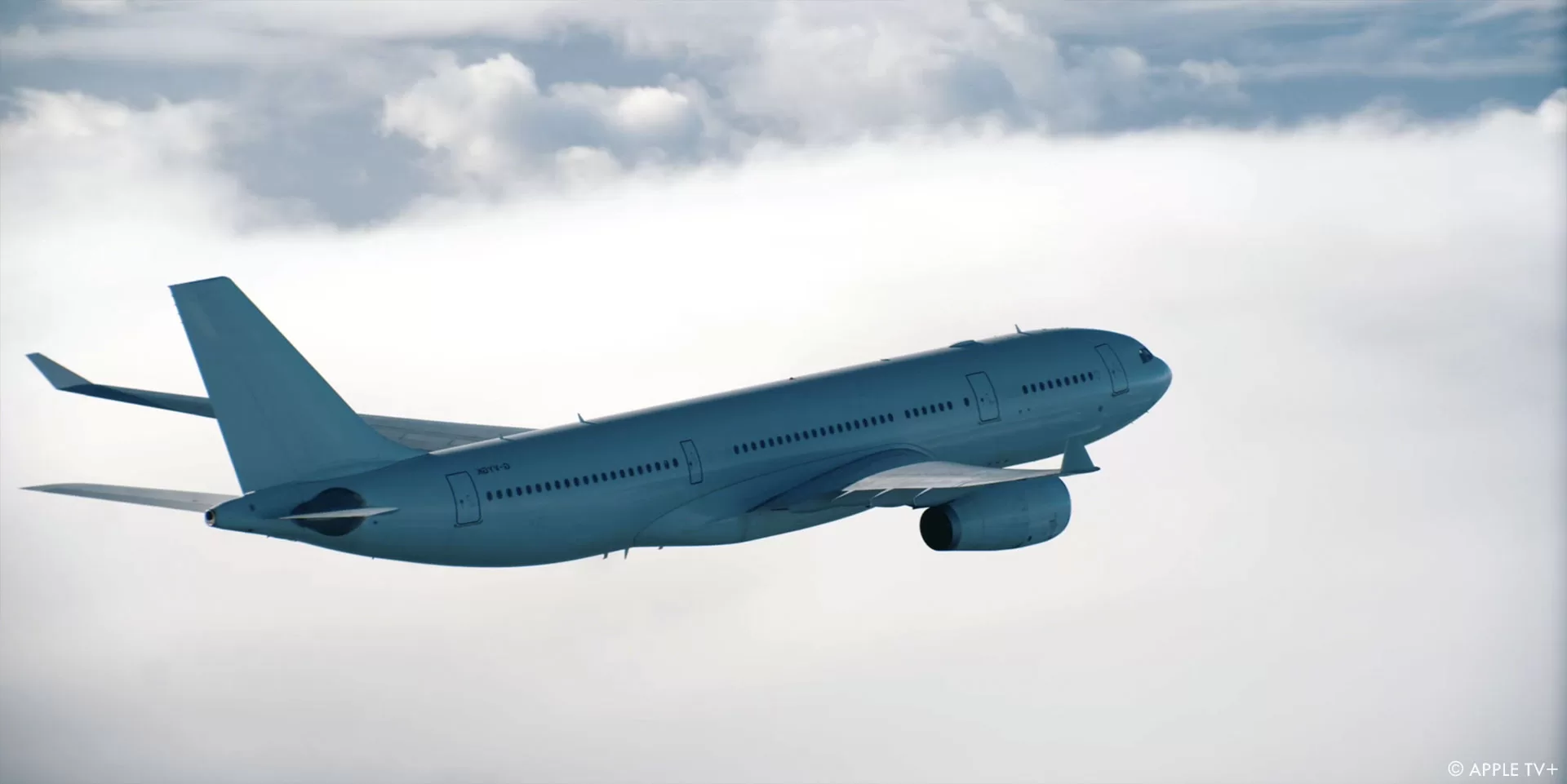
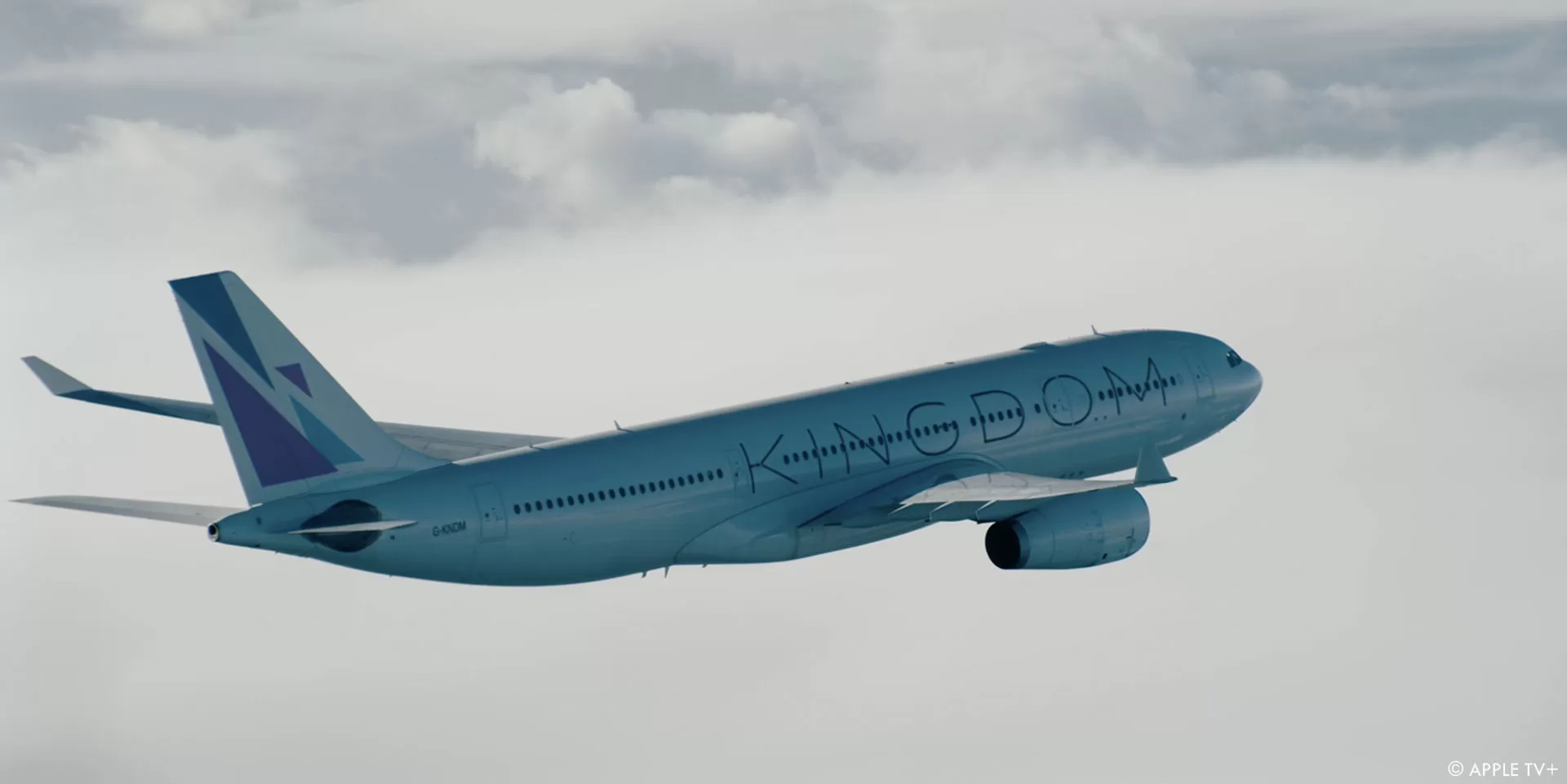
How was created the various skies and the clouds?
Most of the skies are in camera with some of the earlier shots of it leaving Dubai airspace augmented by DMP’s of the land masses glimpsed through the clouds. A handful of super high altitude shots are our CG version of the Kingdom jet against matte paintings primarily derived from cloud and landscape generation using Terragen.
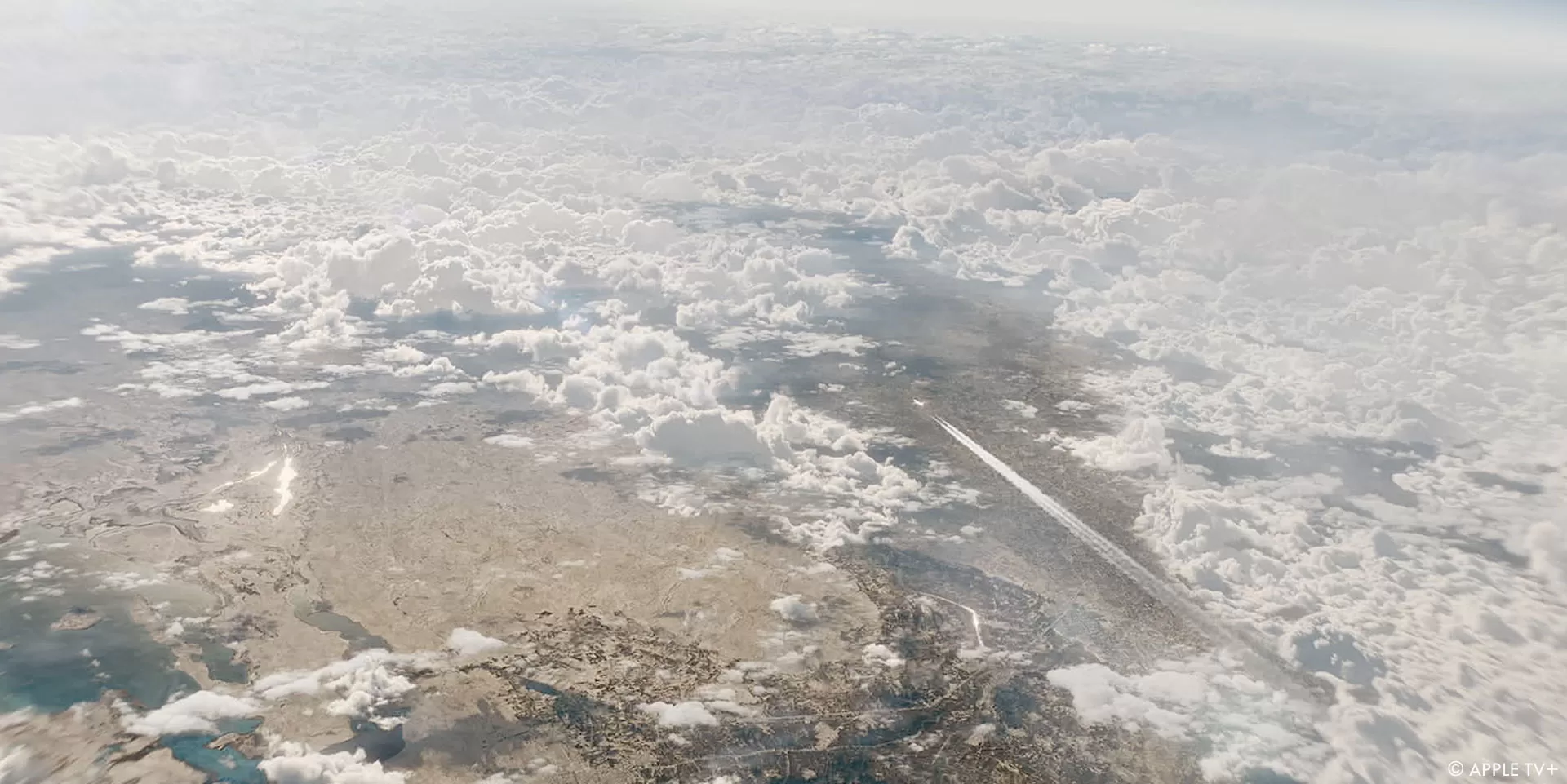
What kind of techniques did you use for the background plates inside the plane?
The main approach to the imagery on the LED backgrounds throughout most of the series were cloudscapes and landscapes generated using Unreal Engine by Shannon Harvey and Spencer Chase, and rendered as 12k Notch LC plates for playback. In the last episode all the cockpit views of the Thames estuary and London were a stitched 6 camera array shooting from a helicopter sped up 2 times on playback, flying from said estuary with an approach to Northolt then landing at Denham aerodrome.
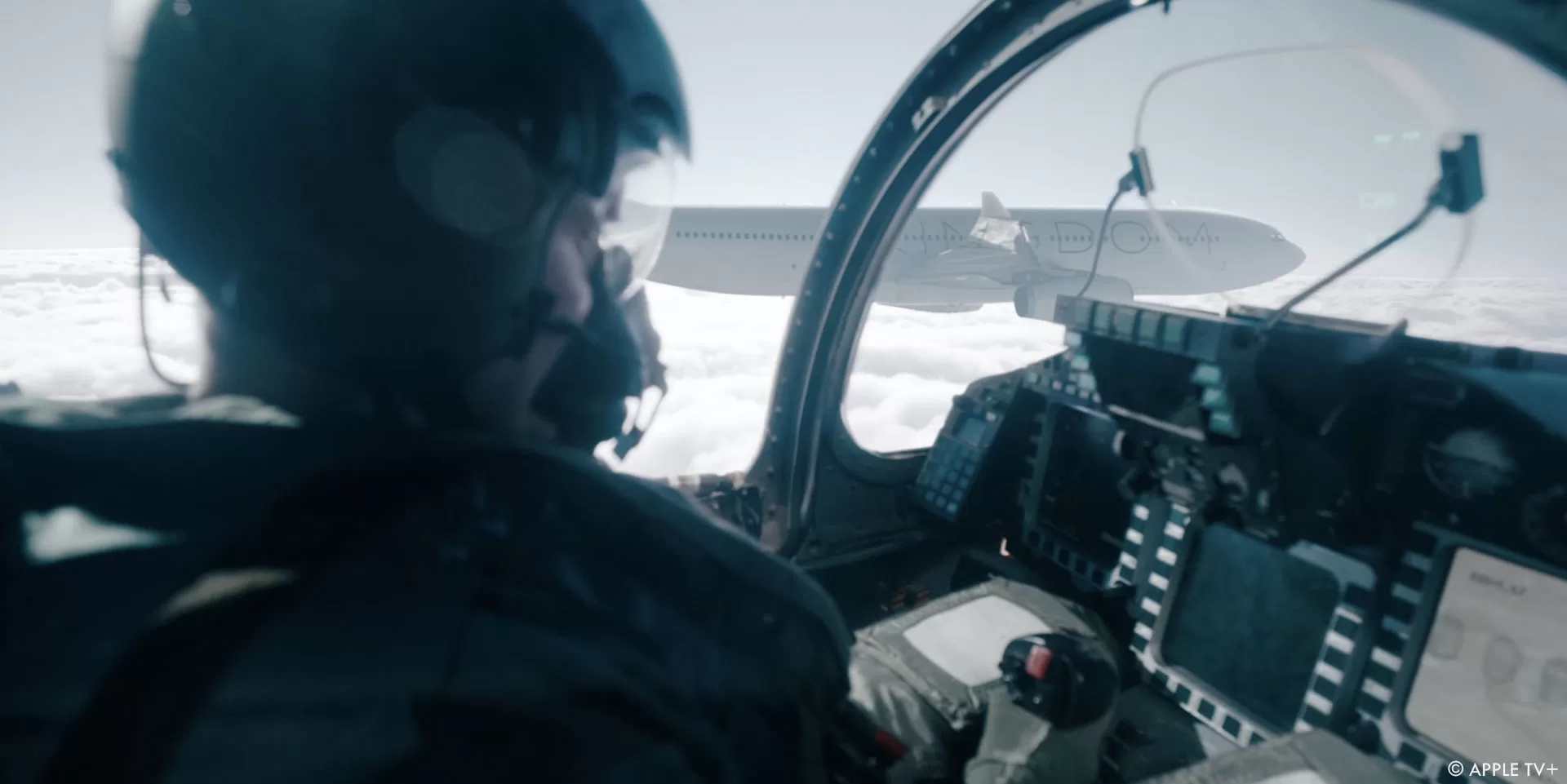
Can you explain in detail about the plane crash?
The plane crash was originally going to be a lot wilder and audacious than the one we ended up with, with the A330 crash landing onto a motorway through loads of recently abandoned cars thanks to their owners knowing a 250 tonnes aircraft is going to drop on them. Then there was a bit of a reality check figuring out this will not be believable and countering the reality factor we’ve built up in the rest of the show, ultimately switching the location to a crash landing at Northolt airport just northwest on the outskirts of London. Northolt is too short for an A330 landing we were told adding to the jeopardy however.
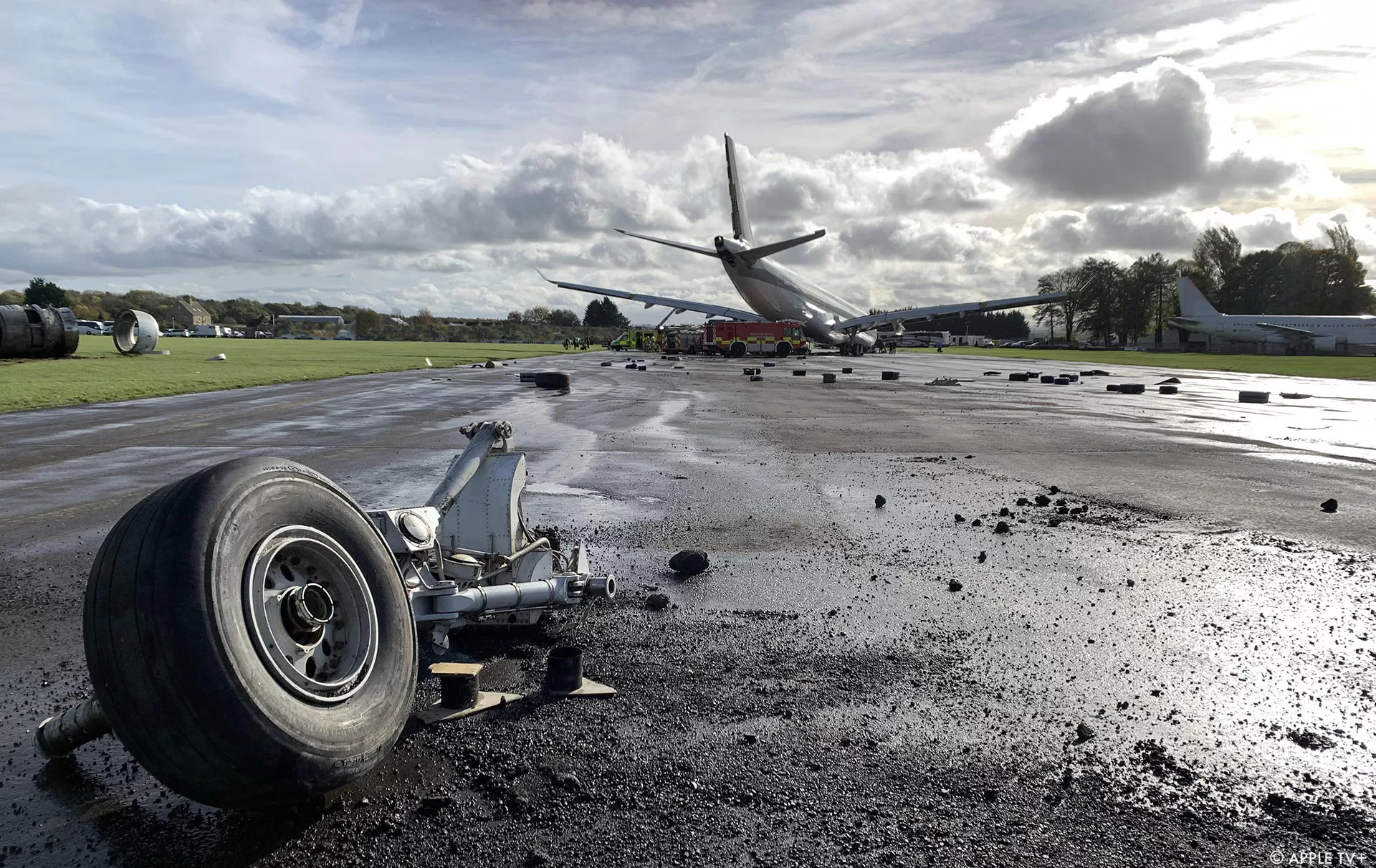
The whole London sequence uses the CG airbus throughout, with real plates shot over and around London. Apart from a belly mounted crash cam angle near the undercarriage there is one hero long lens angle that is intercut for most of the actual crash landing, again heightening the reality of the event, and not doing a multiple angle action movie type number, I think. The environment is derived from stills we’d shot at the Cotswold airport painted to look more like Northolt.. We didn’t hold back on the destruction of the various parts of the fuselage however with the main animation done in Maya and the fire and devastation done in Sidefx Houdini.
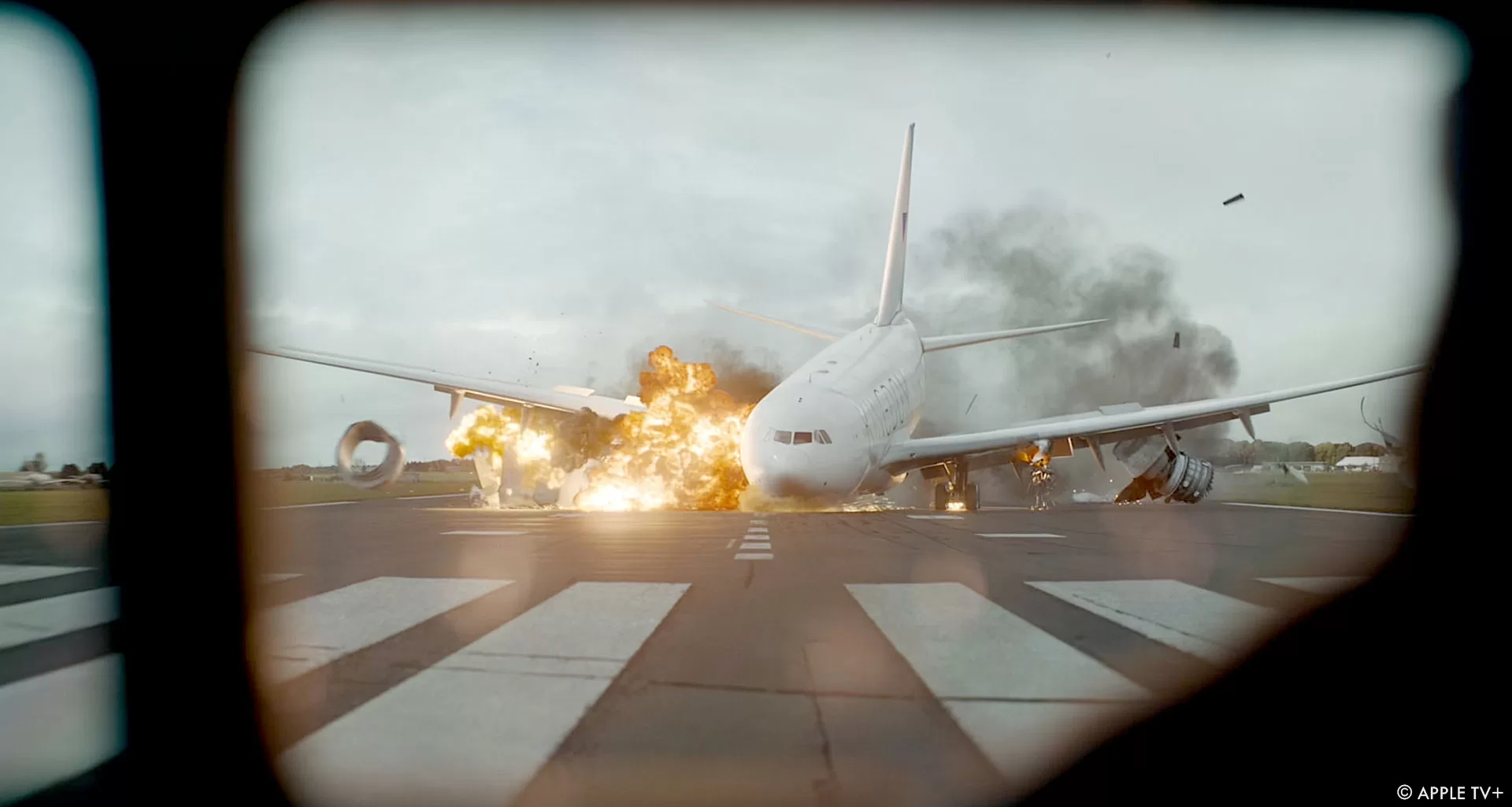
Can you elaborates about the various set extensions?
Although there were others the main set extension seen throughout the series was the Collinswood government office LED backdrop showing a panoramic 6th story view of London. It comprised of 2 4.6k Alexa plates with a 20 percent overlap stitch, shot in multiple 3 minute takes from 7 am to early afternoon, to be used chronologically throughout the show. We didn’t use frustum tech on the stage shoot, but at one point I’d secretly wished we had as there were some big tracks up to the screen, revealing a lack of parallax, but they never made it into the cut.
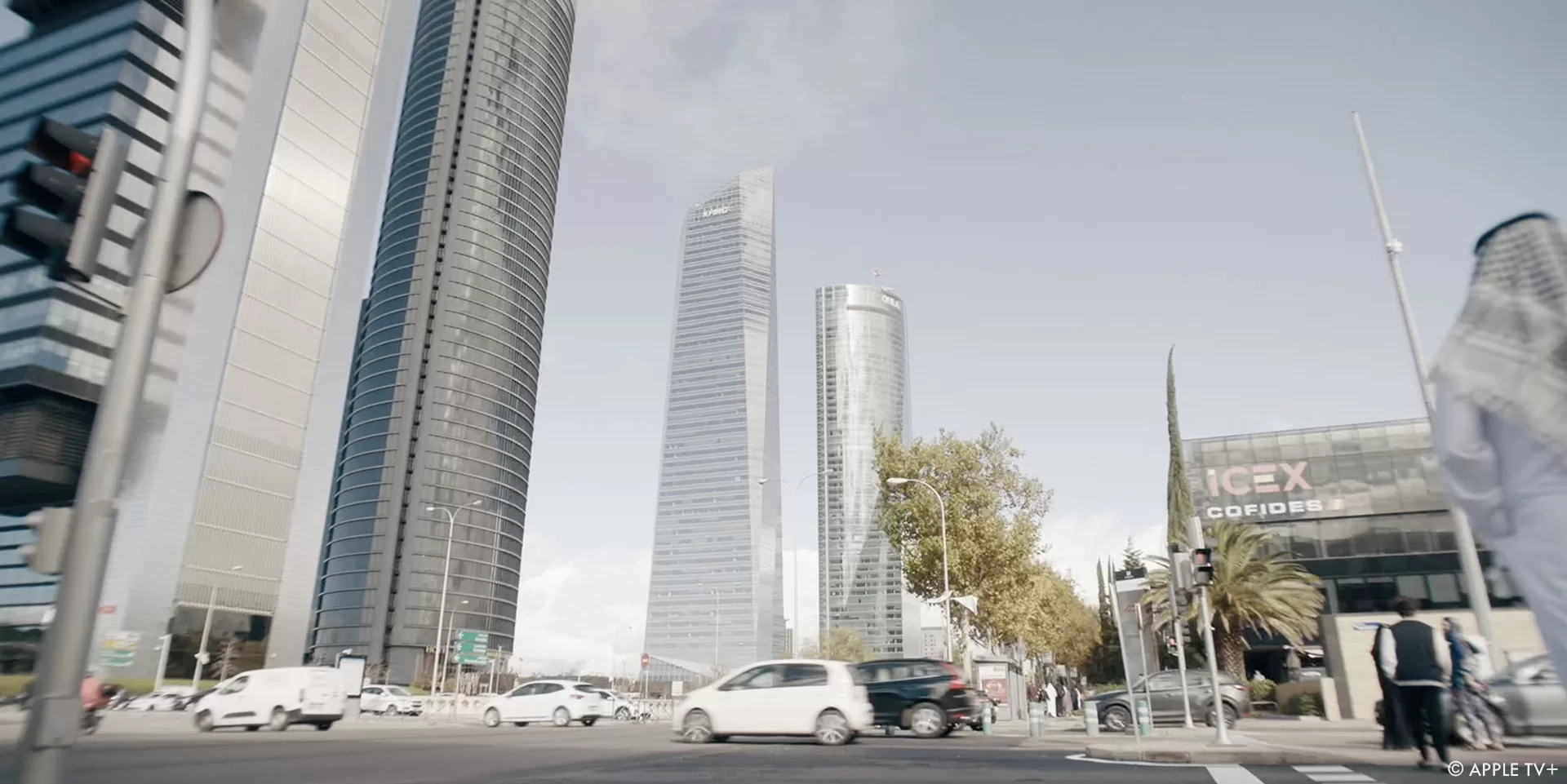
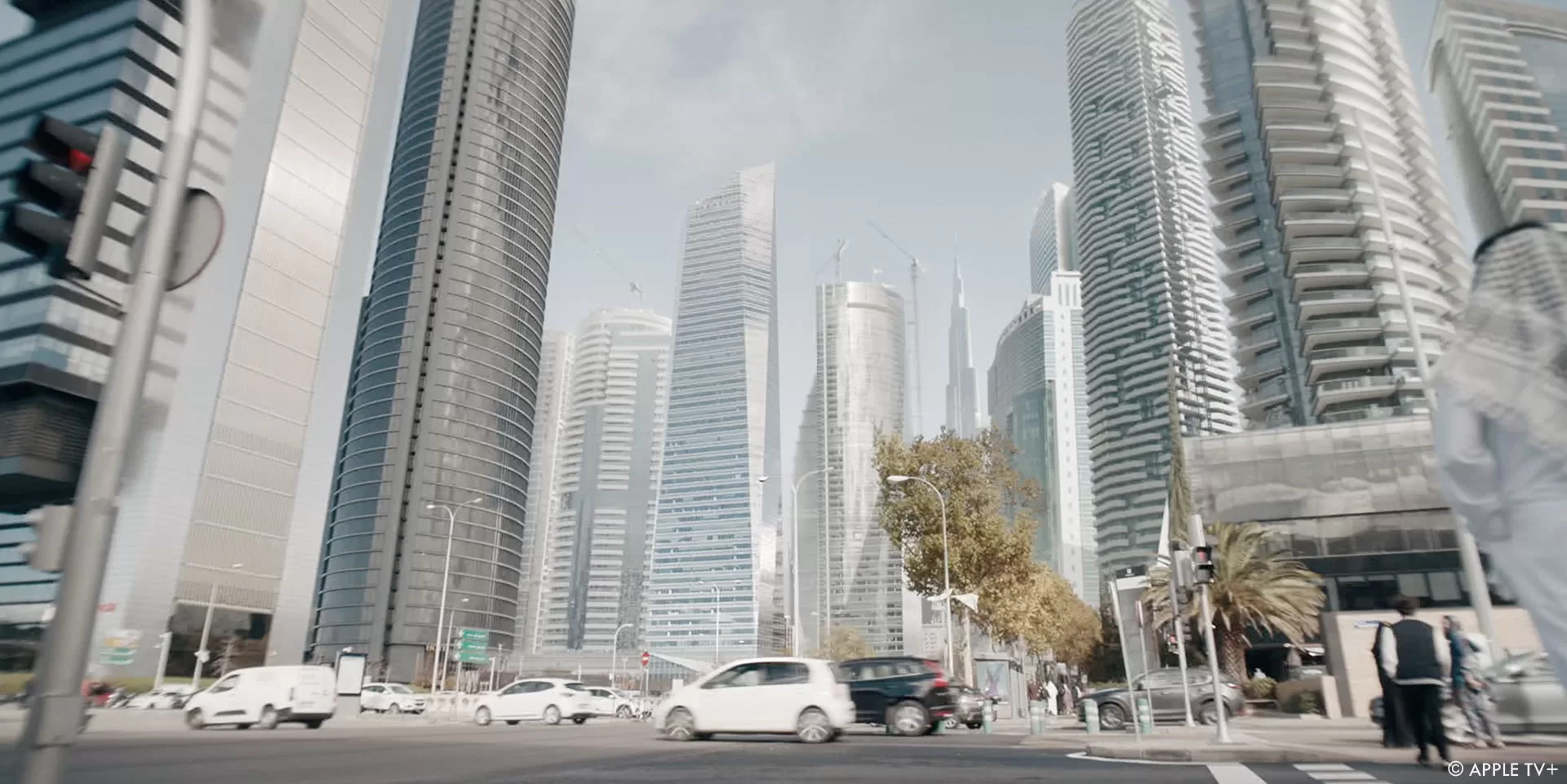
Did you want to reveal any other invisible effects?
Even though they seemed to religiously adhere to the real time approach throughout the shoot by adjusting everyone’s watches and computer display times to the scripted time before shooting, with the AD’s bellowing out ‘Right everyones watch should be set to whatever, that day’, we nonetheless had to fix a mountain of shots, just in case someone freeze framed a two frame glimpse of the miraculously wrong time. LOL.
Which sequence or shot was the most challenging?
The Eurofighter cockpit scenes. We elected to shoot them in our 270 degree volume on a motion base assuming we’d get a nice ambient light wrap around the cockpit and pilot and if the cockpit was was angled into the volume we’d get a nice reflection of the volume sky on the visor which we did to an extent but it reflected over 300 degrees and you could just see off the volume. Being a TV show it was shot in a mad hurry (i.e. no testing time) and although everyone was initially quite happy with the results, after closer scrutiny we saw all sorts of issues that needed fixing. Lots! I’d anticipated we’d have problems with the reflections in the visors so we had them high-rez scanned in order to get a good track and replace everything in them, with CG versions of the cockpit and the pilots arms and sky. The moment the reflections were sorted the shots really started to come together with added high speed vapor on top of the volume sky along with a high frequency shake, which I stopped them doing in-camera as I had a feeling we’d be really nursing-fixing these shots, big time. If we had they would have been a bigger nightmare to track.
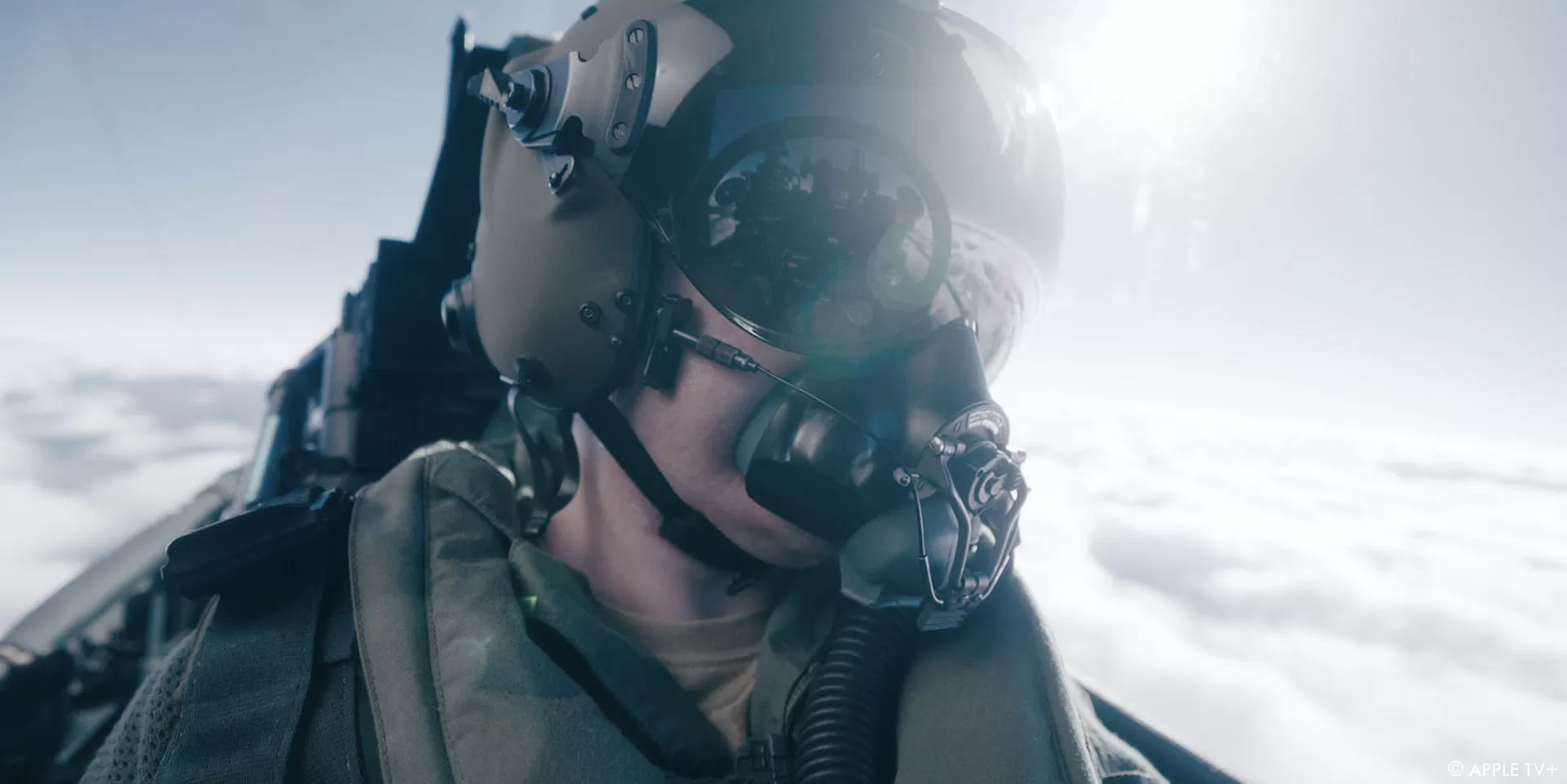
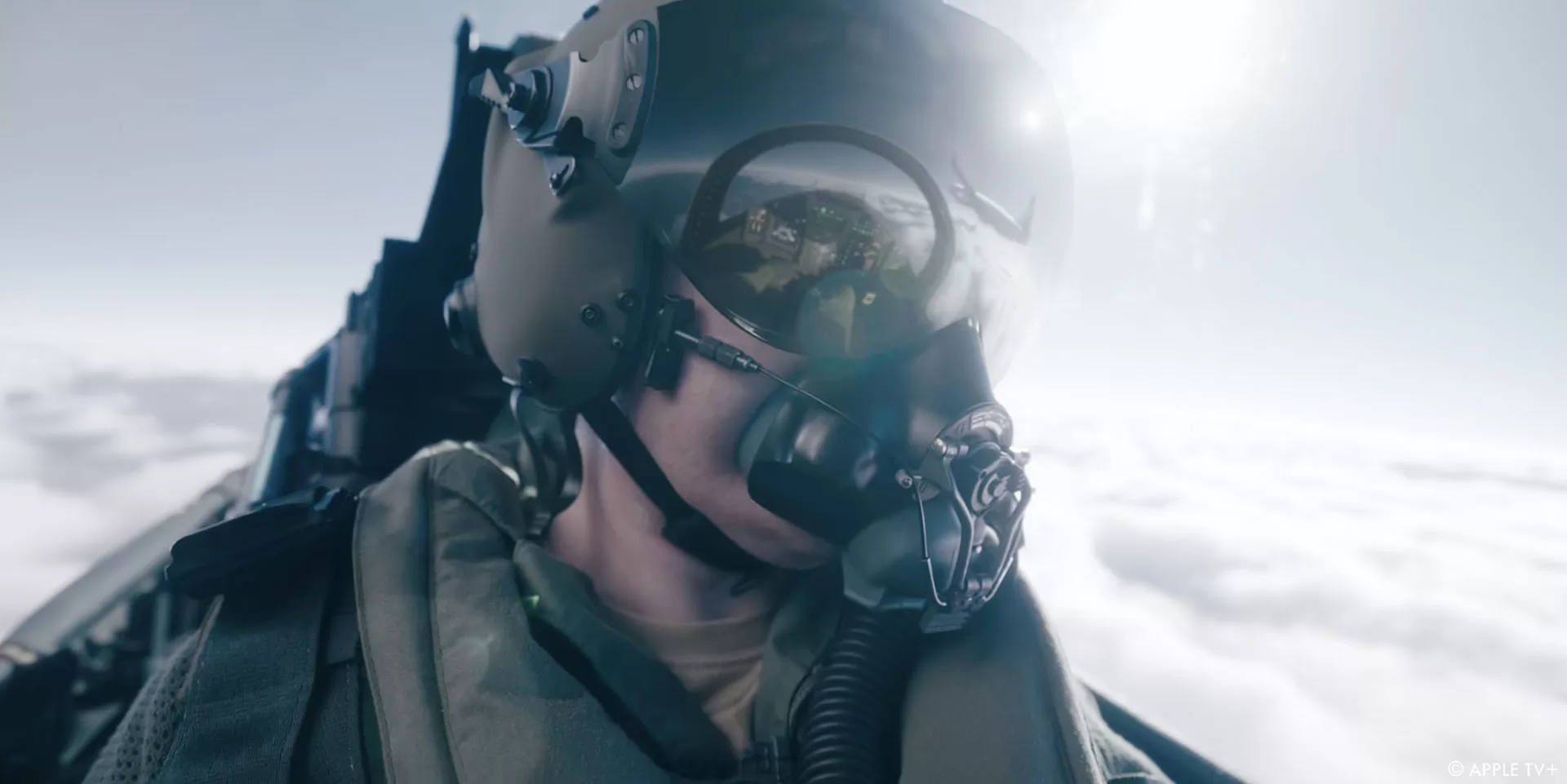
Is there something specific that gives you some really short nights?
The above mentioned shots.
What is your favorite shot or sequence?
The crash of course, in its attempt to be realistic, but nonetheless spectacular. I was initially worried about the amount of flame in the crash explosions as we were supposed to have run out of fuel, but apparently there’s still a lot of fumes in the planes pipes to the engines, enough to cause a nice big fiery, but brief bang.
What is your best memory on this show?
Playing with aircraft and working with a director who wanted everything to not just look real but that they felt had been photographed for real, and not just with camera shake, lens flares, bokeh and shit on the lens.
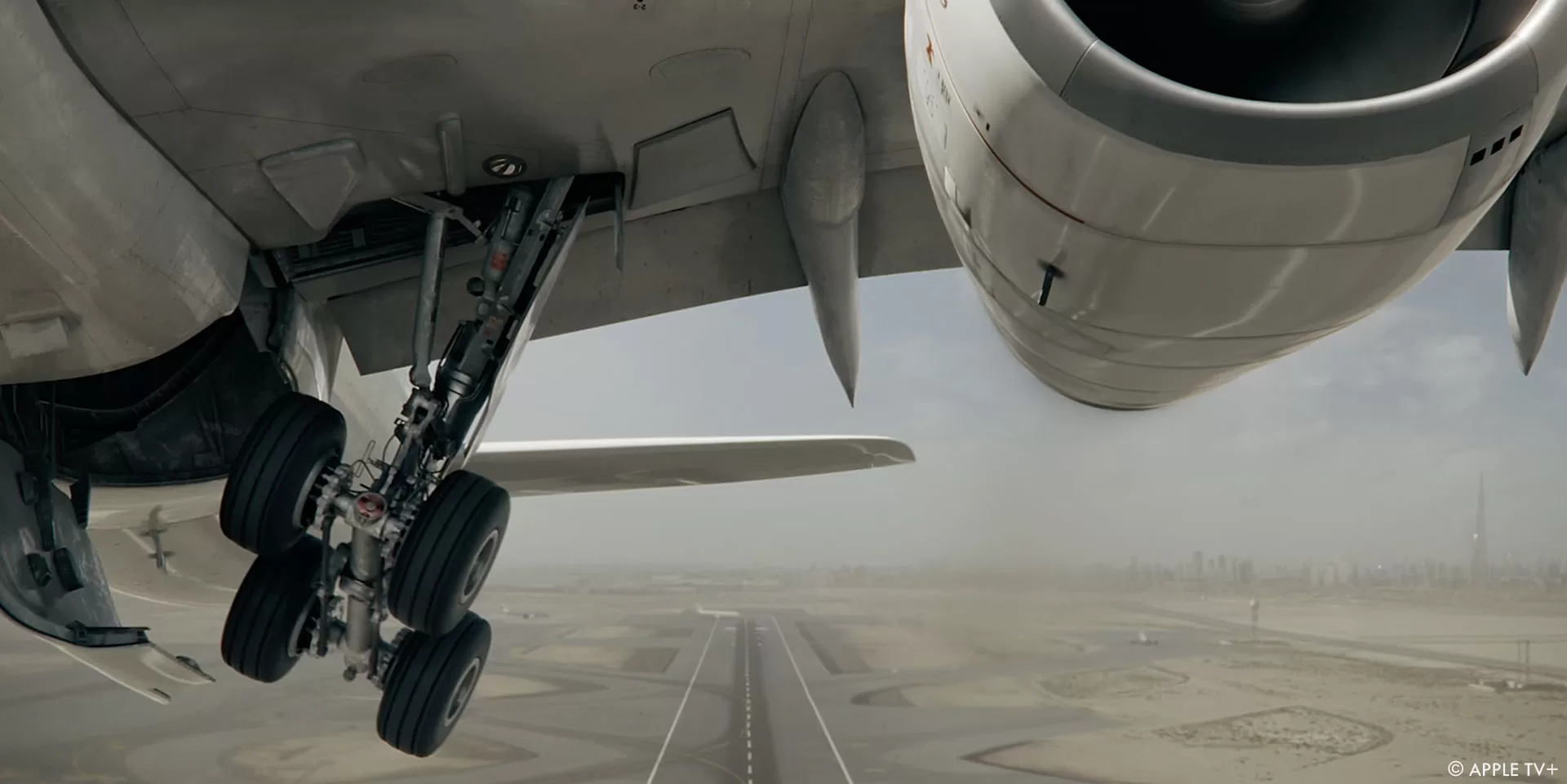
How long have you worked on this show?
17 months.
What’s the VFX shots count?
About 900 throughout the series.
What is your next project?
It’s been delayed by the writers strike. So I’m available for a beer….
A big thanks for your time.
WANT TO KNOW MORE?
Atomic Arts: Dedicated page about Hijack on Atomic Arts website.
Cinesite: Dedicated page about Hijack on Cinesite website.
Apple TV+: You can watch Hijack on Apple TV+ now.
© Vincent Frei – The Art of VFX – 2023






